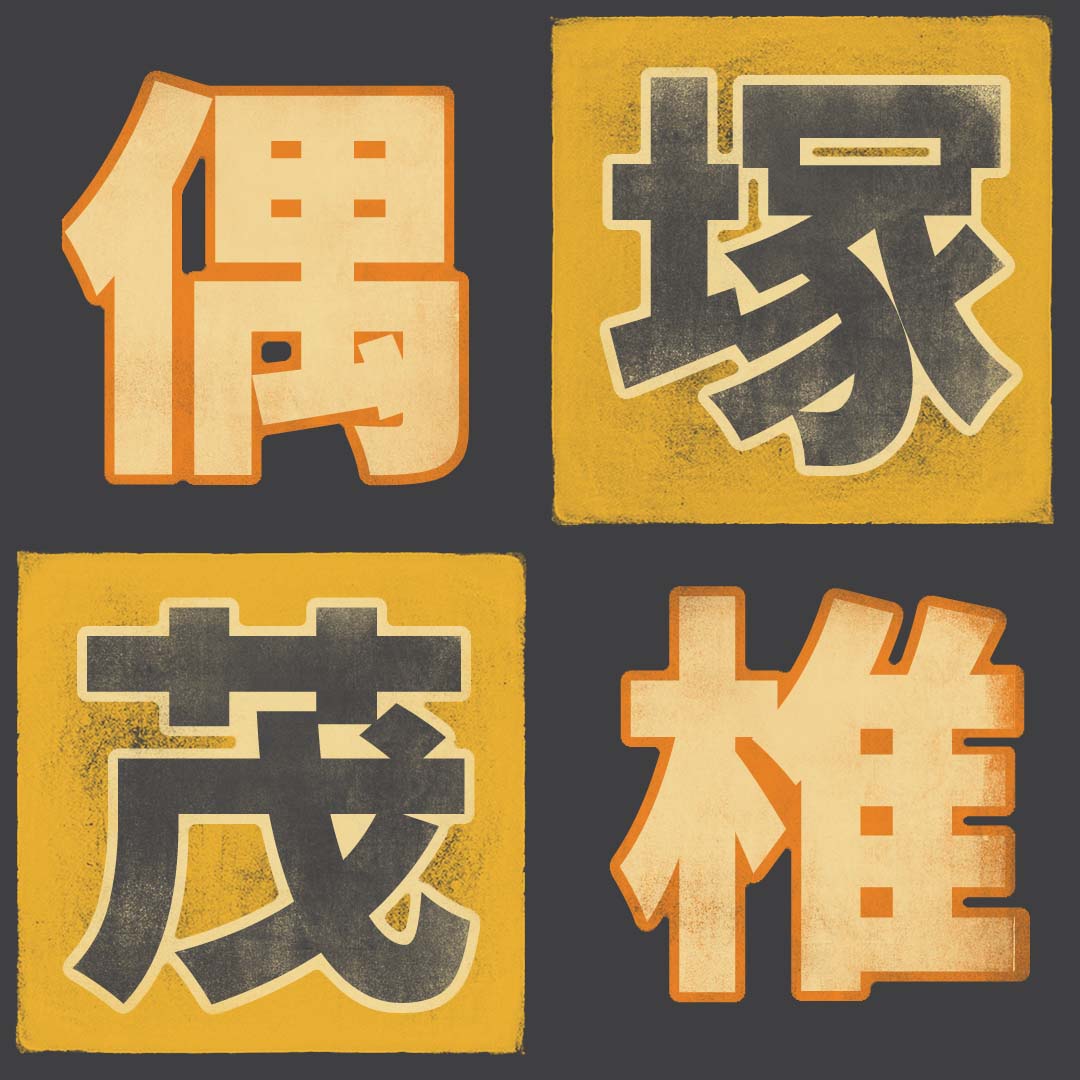
偶
accidentally
JOK: 1185
See how the disparate definitions of 偶 converge on one theme. Learn to discuss chance occurrences (e.g., "I happened to be in London then"). Find out about dogus, the otherworldly figurines that the ancient Japanese created, and see why people compare these statues to the Inuits. Also learn to talk about your idols, whether you adore Haruki Murakami or a North Korean dictator.
塚
hillock
JOK: 1607
The mound kanji appears in very few words, but it's prevalent in Japan nonetheless, thanks to its role in surnames and place names. Mounds have also played a significant role in Japanese history, from burial mounds and memorial mounds to shell mounds. Unexpectedly, studying 塚 opens a fascinating window onto the Japanese past.
茂
overgrown
JOK: 1850
Learn to talk about overgrown gardens, elephants hiding in thickets, and Bruce Willis's sparse hair! Enjoy profiles of celebrities with 茂 in their names, from visionary architect Shigeru Ban to baseball great Hideo Nomo to Shigeru Miyamoto, the creator of Donkey Kong. Read a fun folktale about a tanuki and a tea kettle. Also find out about a place name that pops up all over Kyoto.
椎
beech tree
JOK: 2070
This kanji yokes two very disconnected topics. With its on-yomi, 椎 primarily represents “spine,” so it appears in terms related to vertebrae, spinal diseases, and disc herniation. But with its kun-yomi, 椎 means “Castanopsis,” a type of tree. In that world we discover delicious nuts that look like acorns and even find our way to shiitake mushrooms, which grow on Castanopsis logs.
Kanshudo is your AI Japanese tutor, and your constant companion on the road to mastery of the Japanese language.
To get started learning Japanese, just follow the study recommendations on your Dashboard.
You can use Quick search (accessible using the icon at the top of every page) to look up any Japanese word, kanji or grammar point, as well as to find anything on Kanshudo quickly.
For an overview, take the tour.

